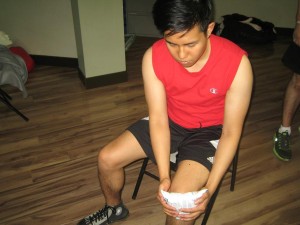A LCL knee injury or lateral collateral ligament is one of the four ligaments that comprise the knee joint. It is described as a thin, rope-like band that stretches from the interior of the femur up to the exterior of the tibia. The lateral collateral ligament is responsible for supporting and stabilizing the knee on the lateral or exterior part of the joint. A direct blow to the knee, tearing of the ligament or overstretching can lead to the development of an LCL knee injury.
Pain and development of swelling
The initial indication that an individual sustained an LCL knee injury is a loud snapping or popping sound that can be heard when the injury was incurred. This is followed by an instant, often intense pain that is focused on the exterior part of the knee.
It is important to note that the tissue surrounding the injury will swell and tender to the touch. In some cases, erythema which is the redness of the skin due to the dilation of the capillaries can manifest several days after the injury was sustained. If you want learn more on pain management, click here.

Instability of the affected knee
The swelling and tenderness on the affected area typically diminishes within a span of a few days but the joint will still feel loose and unstable. In some cases, individuals with a LCL knee injury can predict when the looseness will occur while others simply deal with the uncertainty with each step they take. Always remember that the knee can give out or abruptly lock up without any warning. Some even experience a sensation of a catch in the joint while walking.
Weakness of the affected foot
It is important to note that the peroneal nerve is a component of the sciatic nerve. It is situated on the lower exterior part of the knee and responsible for movement and sensations in the lower leg and foot. In severe cases, the peroneal nerve can be overly stretched at the time of injury or compressed due to the swelling of the surrounding tissues. Both can lead to the weakness or numbness of the foot.
Laxness of the ligaments
Once the ligaments are stretched or torn during an injury, they can become loose or lax, thus unable to support the joint properly. An LCL knee injury can be graded in terms of severity based on the laxity of the ligament.
The laxity is determined through the application of force to stress the ligament and check how the joint responds. In a grade one injury, no laxity is observed. As for grade two injuries, there is a certain degree of ligament laxity but once the knee is stressed, there is an endpoint in which the knee does not bend sideways. Lastly, a grade three injury shows significant laxity.
